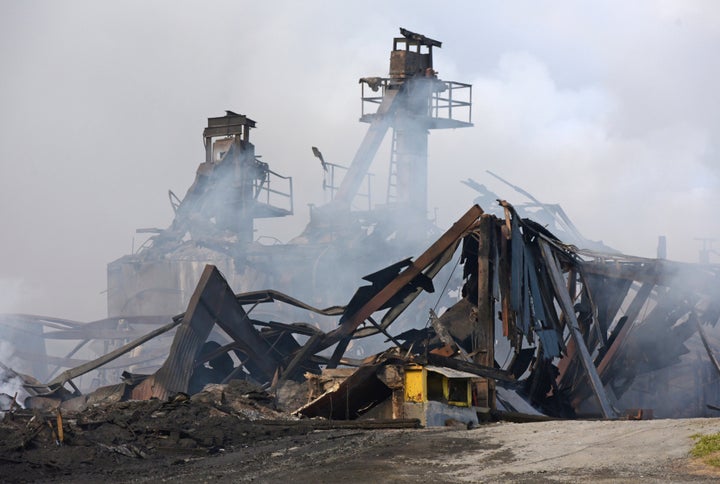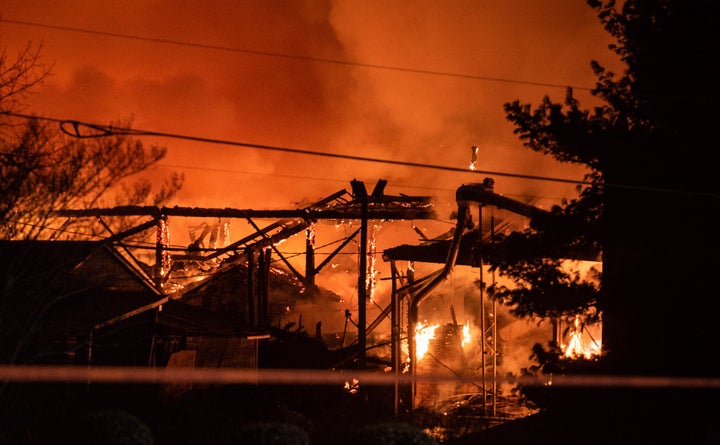
The risk of an explosion at a North Carolina fertilizer plant that caught fire earlier this week has “greatly diminished,” but the community isn’t out of the woods yet, officials said Thursday.
Flames have consumed enough of the combustible substances at the plant in Winston-Salem for firefighters to go in and begin “cooling operations,” said the city’s fire chief, William “Trey” Mayo, on Thursday after consulting with an expert on the explosives.
When the Winston Weaver Company fertilizer plant caught fire on Monday evening, it held about 5,000 tons of finished fertilizer and 600 tons of ammonium nitrate — which can create toxic nitrogen oxide and ammonia when exposed to high temperatures, and may explode.
That’s enough ammonium nitrate to cause “one of the worst explosions in U.S. history,” Mayo said Wednesday. Up until now, it’s been too dangerous for firefighters to approach the scene.
The fire department now has about 500 gallons of water per minute flowing onto piles of fertilizer and ammonium nitrate at the facility. However, Mayo added, “We don’t know what may happen when we start, you know, getting in and poking around in the plant and moving things around with heavy equipment.”
“At this point, the greatest risk is from a rapid fire condition due to moving stuff around and opening things that have the heat and the fuel, but they don’t have the air,” he explained.
People are still advised to stay far away from the area, he added.
Overnight rain helped reduce the explosion risk as well, but it also increased contaminated runoff water and pushed smoke closer to the ground, posing a greater health hazard. The Environmental Protection Agency is on site, monitoring those exposure risks to the community.
“They’re measuring particulate matter, they’re measuring compounds of sulfur, they’re measuring ammonia, they’re measuring nitrogen dioxide,” Mayo said.
Questions about fire safety at the facility have swirled in the days since the fire ignited. The Winston-Salem plant was built in 1939, the media has noted, allowing it to bypass current ordinances requiring sprinklers to be in place.

“It’s difficult to speculate, but what we do know is, historically ... there’s never been a multi-death fire in America in a building that was properly equipped with fire sprinklers,” Mayo said Thursday when asked about the role sprinklers could have played.
City council member D.D. Adams promised to find help for the 6,500 people who’ve incurred the costs of evacuating the area.
“They don’t feel safe. They’re anxious. They’re nervous,” she said at Thursday’s press conference. “They don’t know when some of them are coming back home. And the hotel bills are killing them because most of everyone lives from paycheck to paycheck.”
Mayo spoke through tears as he recalled the high-stakes decisions his department has had to make in response to the fire and the moment the ammonium nitrate expert he brought in told him they’d done exactly what was needed.
“I can go to bed and sleep for the rest of my life being confident in the decisions we made this week,” Mayo said.
